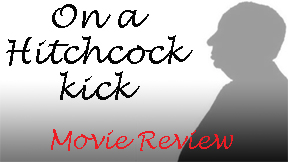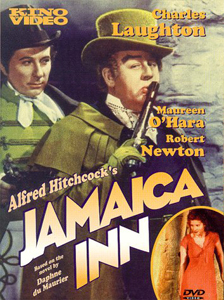Alfred Hitchcock adapted three Daphne Du Maurier works, more than any other author. Two are famous: the Oscar-winning “Rebecca” (1940) and the creature-feature favorite “The Birds” (1963). And then there’s … record scratch … “Jamaica Inn” (1939).
Hitchcock’s last British film, adapted from Du Maurier’s 1936 novel, is a grim, darkly lit, oddly winking but never humorous portrait of life in the early 19th century on the brutal Cornish coast. It would feature zero appealing characters, except that the beautiful Maureen O’Hara – in her breakthrough role — stands in stark contrast to the filthy den of thieves at the titular locale.
O’Hara’s Mary is a classic cinematic innocent who visits her bedraggled aunt Patience (Marie Ney) and gang leader uncle Joss (Leslie Banks) at the Jamaica Inn, not realizing it is an outfit that specializes in luring ships onto the rocks, killing everyone on board and plundering the loot.

“Jamaica Inn” (1939)
Director: Alfred Hitchcock
Writers: Sidney Gilliat, Joan Harrison (screenplay); Daphne Du Maurier (novel)
Stars: Maureen O’Hara, Robert Newton, Charles Laughton
Just down the road is Sir Humphrey Pengallan (scenery-chewing Charles Laughton), a gluttonous squire who informs the Jamaica Inn of ship schedules, then takes a massive cut of the loot. Somehow he has kept this scheme under wraps until Mary and lawman James (Robert Newton) – OK, he’s a second likable enough character – uncover it.
A negative Yelp review for this ‘Inn’
Hitchcock’s directing quality can’t be quibbled with much, as the shipwreck scenes are acceptable for the era, and the titular locale reads as more than a set – although there’s always a slight stage-play flavor to the proceedings, as if the hoard of criminals are waiting in the wings till needed. And between the pitch-dark cinematography and bleak happenings (although softened by most killings happening off-screen), the message is clear: Whatever time and place the viewer lives in, at least it’s not 1820 Cornwall.
Laughton (“Witness for the Prosecution”), showing off his chins, tries for a campy turn, but his efforts don’t elevate the thin screenplay by Sidney Gilliat and Joan Harrison. “Jamaica Inn” does have the slightest Hitchcockian sense of “What’s gonna happen next?” but not enough to overcome the fact that I disliked almost everyone on screen.
I didn’t care much about the details of how Sir Humphrey and Joss meet justice, I just waited for it to get to that point. A late-film twist about Joss is flat and unearned, but it’s unlikely anything could’ve piqued my interest by that point.
“Jamaica Inn” has its defenders and its haters, with some in the latter group pointing out that it’s not faithful to the superior novel. Considering how unappealing this film is, it’s interesting to note that it has been adapted three additional times – in 1983 and 2014 British miniseries and a 1995 French TV movie. I am mildly intrigued, but I’ll have to take time to wash away thoughts of the 1939 version.

Part of my dislike of this first crack at “Jamaica Inn” comes from sound quality issues on the DVD release; it takes effort just to understand some of the dialog. I do credit the restoration team for recovering this once-almost-lost film and putting out an acceptable version. Because it comes from Hitchcock, it deserves to be preserved and studied. But not watched by me more than once.
RFMC’s Alfred Hitchcock series reviews works by the Master of Suspense, plus remakes and source material. Click here to visit our Hitchcock Zone.

